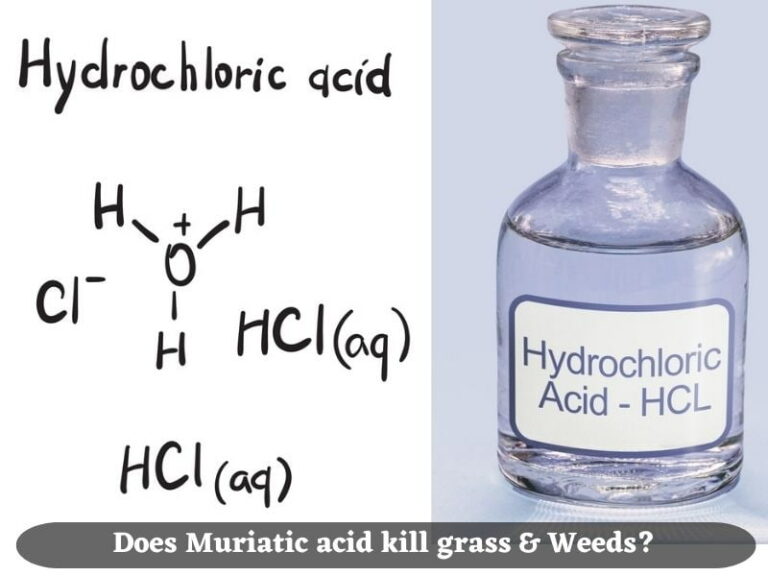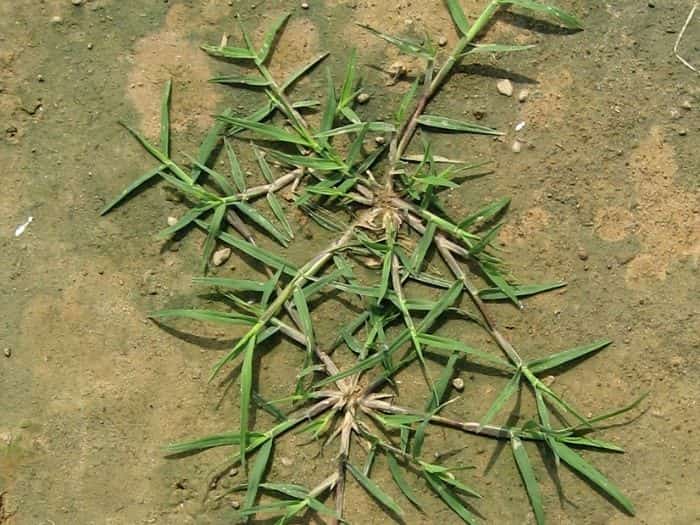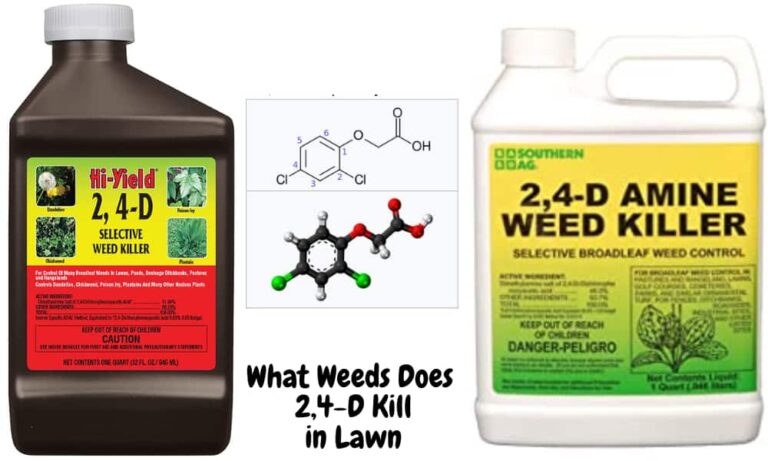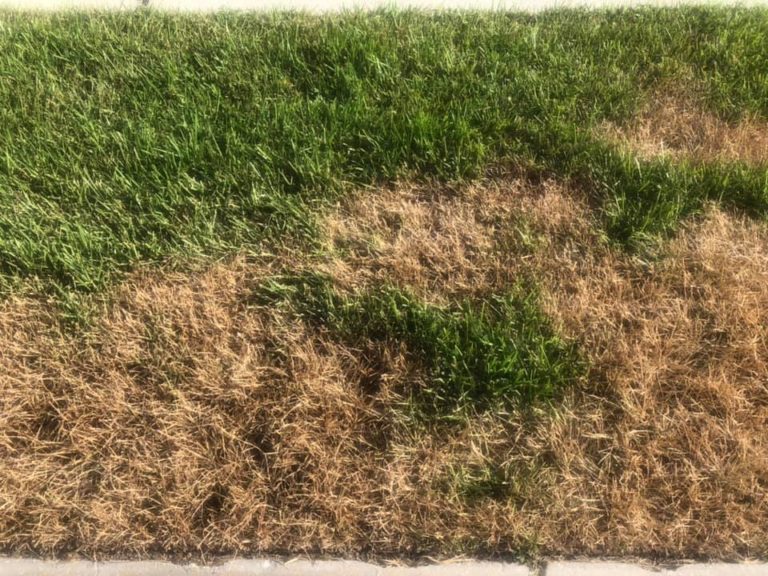Types of Crabgrass – Identification with Pictures
Crabgrass is one of the most difficult weeds to remove from the lawn. Other tough weeds include dandelions, goosegrass, and lawn stickers. Although it is an annual summer weed, it produces numerous seeds each growing season that regrow in favorable conditions in early spring. This pesky weed can take over your lawn if it’s not controlled early.
You, therefore, need to identify the weed in its early stages of life and remove it or prevent its seeds from growing. Different varieties of crabgrass include; smooth, large, blanket, India, tropical and southern. To effectively identify and differentiate these varieties of crabgrass we look at features such as:
- Type of growth,
- How it spreads,
- Leaf vernation,
- Leaf morphology
- Auricles
- Ligule
- Leaf sheath
- The collar region.
We’ll look at how these features vary in the different kinds of crabgrass to help you identify and remove them from the lawn before they take over.
Types of crabgrass (Identification)
Crabgrass exists in six different varieties, each adapted to thrive in different lawn environments. While some types may look similar, they have unique features that set them apart.
Here is a detailed guide to identifying the different types of crabgrass.
1. Smooth crabgrass (Digitaria ischaemum)
Smooth crabgrass is a summer annual, low-growing, bunch type growth weed. It spreads by seeds and underground nodes.
The leaf blades of its seedlings are purple. The leaves are more than ¼ inches long and pointed. New young leaves emerge rolled from the bud during germination.
Smooth crabgrass has a small membranous ligule that is conspicuous, making it more noticeable. The collar is broad, prominent, and hairy at the margins but has no auricles.
The leaf sheath of this grass is smooth on the upper surface but has tiny hairs on the lower surface.
Smooth crabgrass has a fibrous root. The inflorescence has branches originating from the main stalk at 1/8 to ¼ intervals.
2. Hairy or large crabgrass (Digitaria sangunalis)
Large crabgrass majorly invades spaces in orchards, vineyards, and lawns. It spreads by seeds and rooting on the nodes in the soil. Where the ground is moist, it forms clumps.
Large crabgrass seedlings are light green. Its leaf blades have hair on the upper and lower surface. New young leaves emerge, rolled at the buds but unroll as they grow. If crabgrass is left unmowed for long, it can grow up to 2 inches tall. Also, It doesn’t tolerate low mowing.
3. Blanket crabgrass (Digitaria setorina)
This grass is mat-forming and lives longer than other crabgrass weeds – typically longer than one season. It’s therefore called the annual summer perennate.
It has a creeping stolon, but its leaf blades are short (1 inch long). The leaves have hairs and are crowded on the creeping stem.
Blanket crabgrass is unique among the other types because it has hair on its sheaths and leaf blades.
Its membraneous ligule is visible from the base of the leaf blade. Blanket crabgrass spreads by stolons and seeds. Its flower stems seem to ascend. Blanket crabgrass is primarily found in wet areas.
4. India crabgrass (Digitaria longiflora)
India crabgrass forms a mat like the blanket crabgrass. It is also an annual summer perennate weed. You can tell India crabgrass from blanket crabgrass by observing their sheaths. One with a hairy sheath is blanket crabgrass, while one without is India crabgrass.
India crabgrass forms the crowd at the creeping stems. Its membraneous ligule is visible at the base of the leaf blade. India crabgrass spreads by seeds and stolons and thrives in dry areas.
5. Southern crabgrass (Digitaria ciliaris)
Southern crabgrass has similar characteristics to large crabgrass. It has branched stems that root at lower nodes, forms clumps, and have large leaves (more than 2 inches). This weed has hairs on both surfaces of the leaf blades and prefers to thrive in dry areas.
These features are similar to large crabgrass. But, the seedhead of southern crabgrass and large crabgrass rise from different points along the stalk.
6. Tropical crabgrass (Digitaria bicornis)
Tropical crabgrass has seedhead branches joined from a common point in the stem, unlike southern and large crabgrasses. It has long leaves (over 2 inches) with hair on both sides. Its membraneous ligule is visible at the base of the leaf blade and reproduces by seeds. Tropical crabgrass has an annual creeping growth.
Why is crabgrass bad for your lawn?
Crabgrass growing on the lawn is unacceptable. Its unmitigated growth leads to an uneven, unsightly, nutrient-deficient lawn. Remove it immediately if you notice any of its varieties.
Crabgrass forms clump, making a lawn unattractive
Well-manicured home lawns have a green, thicker, and healthy appearance. They’re breathtaking. The massive crabgrass invasion to some parts of the lawn destroys the previously thick and lush appearance.
Crabgrass varieties have a lighter green color from the usual dark green turfs on lawns. The light green parts invaded with crabgrass look like spots on the lawn, creating a dull, ununiform appearance.
Furthermore, crabgrass tends to grow together, forming clumps that make the sections of the lawn ugly.
Crabgrass can take over a lawn in summer
Crabgrass is a very opportunistic weed; it vigorously grows whenever it gets some space or favorable conditions.
Crabgrass seeds start germinating in spring when the average soil temperature for four consecutive days is above 55oF. They grow successively until the onset of summer. Most cool-season grasses become dormant and turn brown in the hot and dry summer months, thus setting a perfect time for crabgrass to grow rapidly and spread its seeds.
Crabgrass prefers the hot and dry climatic conditions to thrive. Because they are active when the grass is dormant in summer, they grow aggressively and spread numerous seeds. One crabgrass plant can spread up to 10,000 seeds.
The weeds continue growing and thriving throughout summer. At this time, if you never knew crabgrass existed on your lawn, you will start to notice light green spots and clumps of grasses all over your lawn.
But, because crabgrass is an annual weed, it dies at the onset of the first frost in fall. Even if it dies, it has spread numerous seeds that would stay dormant on the lawn until spring then regrow, and the cycle restarts.
Crabgrass competes with turf for essential elements
Lawns with bare spots are a great hotspot for crabgrass weeds invasion. A poorly fertilized, mowed, and watered lawn creates unhealthy thin grass, which is more vulnerable to crabgrass attack.
When this opportunistic weed grows on your lawn, it competes with the turf for water, nutrients, space, and sunlight.
During hot and dry summers, the weed consumes most of the water and nutrients supplied to the grass, leaving the grass with little or no water.
Crabgrass also fills up bare spaces on lawns that you would otherwise overseed with new grass seeds.
Stiff competition for essential nutrients with the grass can lead to thin, dull lawns, and sometimes the weed can choke the grass.
Sometimes, crabgrass growing on lawns indicates the lawn is unhealthy and poorly maintained. Even if the weed dies at first frost in fall, it leaves its seeds on the lawn that would regrow to produce more, and the cycle continues.
To salvage your lawn from this weed, you must prevent its seeds from growing. You can apply a pre-emergent herbicide in late winter or early spring when daytime temperature reaches 55oF. After four weeks, make a second application to kill the seeds completely from the lawn.
The most effective way to prevent crabgrass and other weeds from growing is by taking good care of your lawn. Water the lawn regularly, mow at the correct heights, and fertilize to make the grass outcompete weeds. Overseed bare spots on lawns to discourage weeds from growing. Other maintenance practices include aerating and dethatching.
References
- Purdue University: Crabgrass.
- University of Minnesota Extension: Tips for controlling crabgrass in your lawn.
- https://edis.ifas.ufl.edu/publication/EP395





